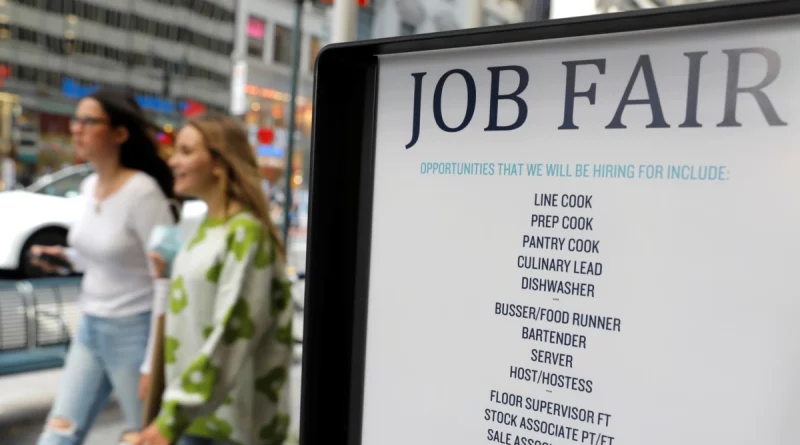U.S. unemployment fell to 3.5% in December
U.S. unemployment fell to 3.5% in December
The U.S. economy maintained strong job growth in December, with the unemployment rate falling to 3.5 percent, but higher borrowing costs associated with the Federal Reserve’s actions to fight inflation could lead to a significant slowdown in labor market dynamics by midyear.
Nonfarm payrolls rose by 223,000 jobs last month, according to a Labor Department report released Friday morning. November’s data were revised downward: 256,000 jobs entered the market in the penultimate month of last year instead of the 263,000 previously reported.
Economists surveyed by Reuters had predicted job gains of 200,000 in December, from 130,000 to 350,000. Monthly job growth is well above the pace needed to keep pace with growth in the working-age population.
The unemployment rate fell to 3.5% in December from 3.6% in November. The government revised seasonally adjusted household survey data, which is used to calculate the unemployment rate, for the past five years.
Average hourly earnings rose 0.3% after rising 0.4% the previous month. That lowered the annual wage growth to 4.6% from 4.8% in November. Data released by the Labor Department this week shows that there were 10.458 million job openings at the end of November, equivalent to 1.74 jobs for every unemployed American.
The labor market remains strong, despite the fact that as recently as last March the Fed began its fastest interest rate hike since the 1980s.
Interest-rate-sensitive industries such as housing and finance, as well as technology companies including Twitter, Amazon and Meta, the parent company of Facebook, have cut their staffs. But airlines, hotels, restaurants and bars are in desperate need of workers as the leisure and hospitality industry continues to recover from the COVID-19 pandemic.
A resilient labor market supports the economy by keeping consumer spending afloat. But it raises the risk that the Fed could raise its target prime rate above the 5.1% peak forecast by Fed officials last month and hold it at that level for some time.
The trend in employment growth, however, could slow significantly by midyear as expensive credit affects consumer spending and ultimately business investment.
Last year, the Fed raised the discount rate by 425 basis points from nearly zero to a range of 4.25-4.50%, the highest level since late 2007.
